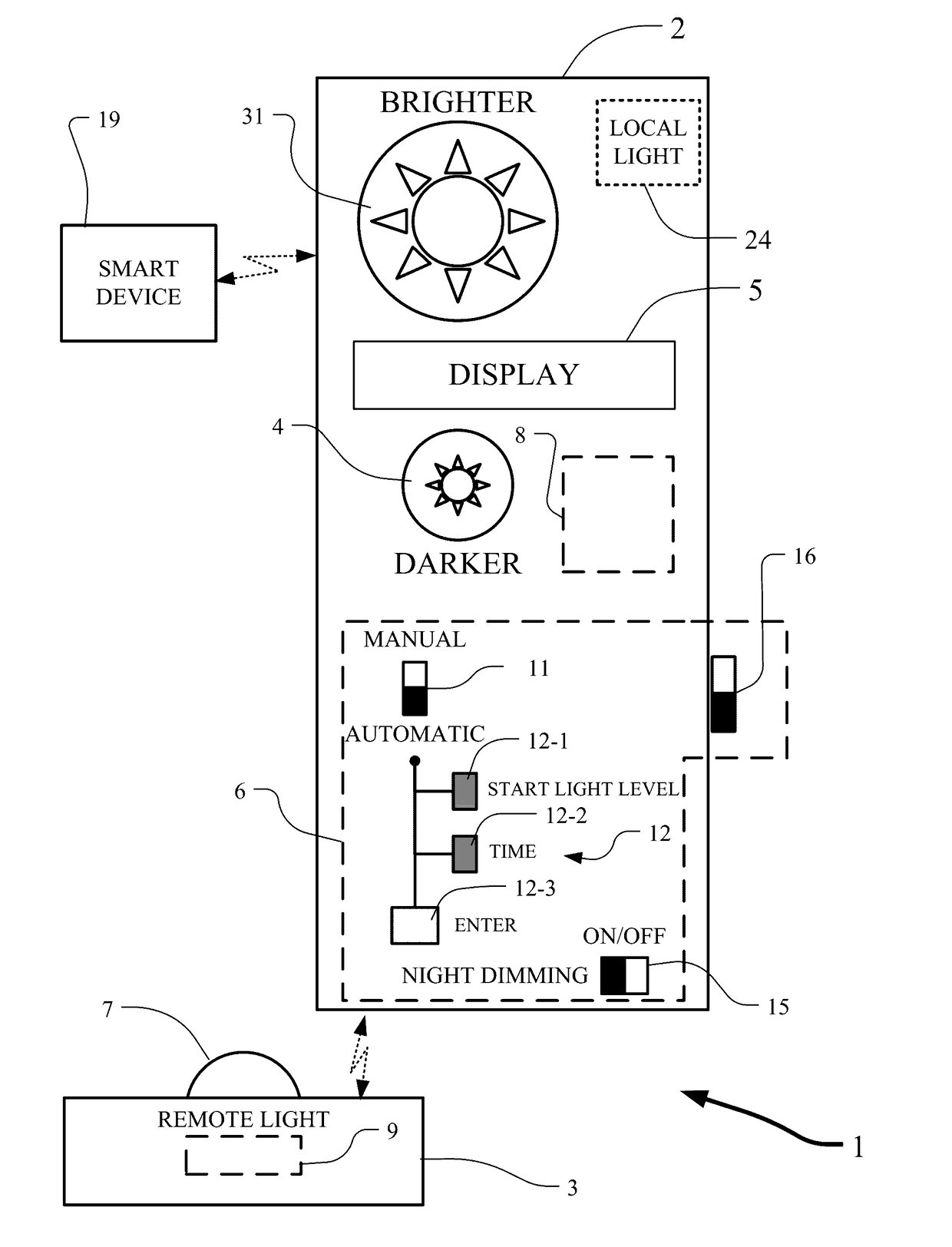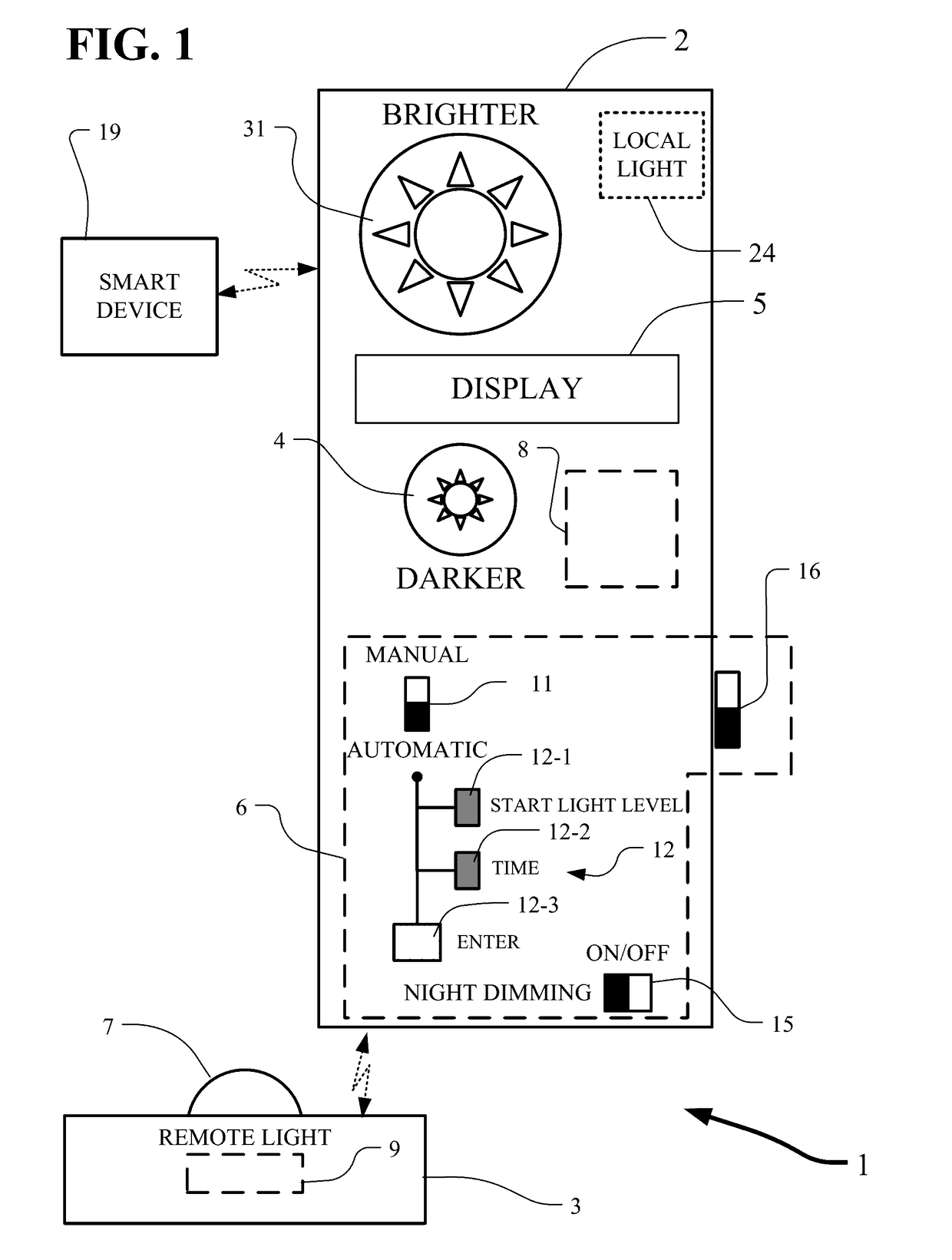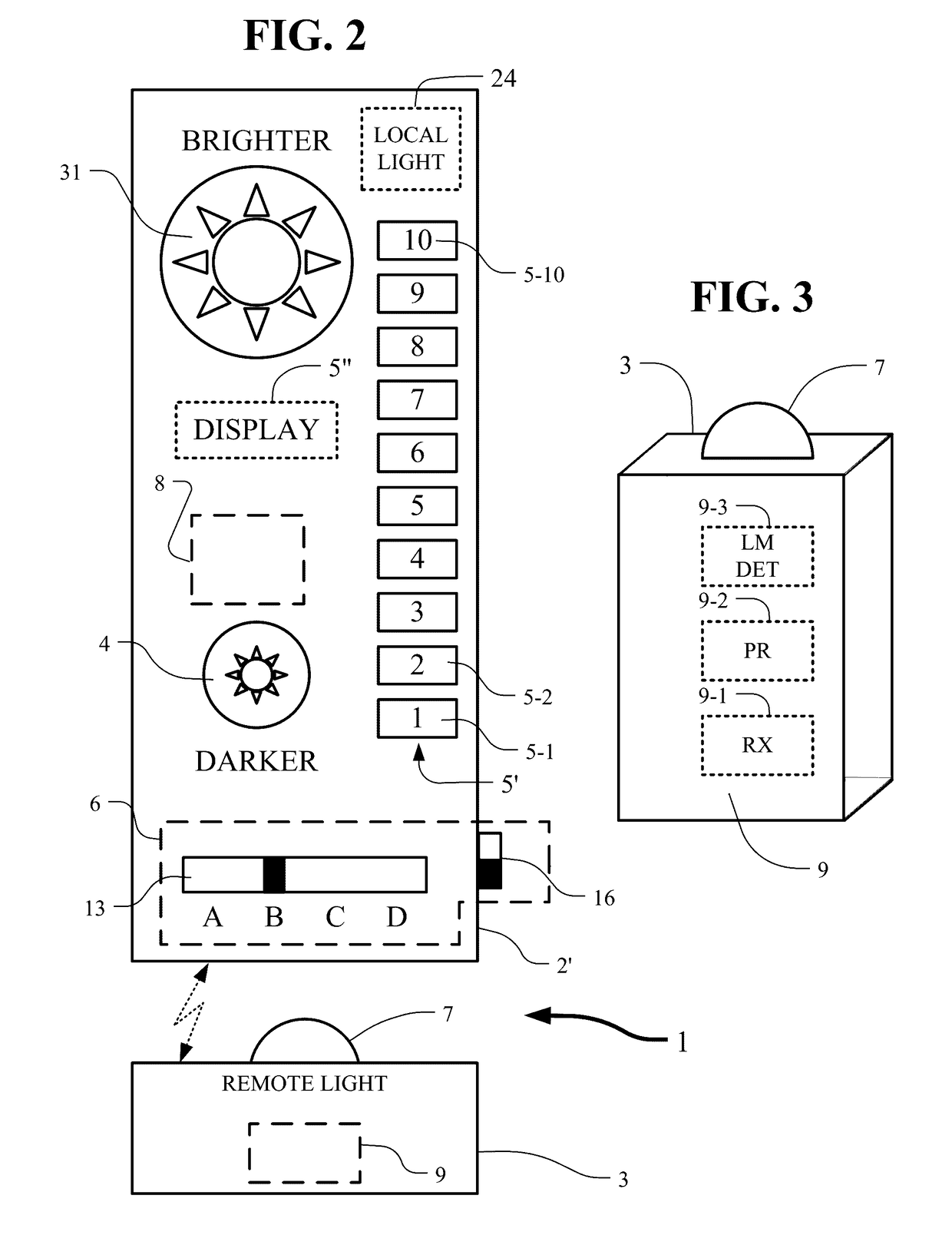Night light for reducing nighttime fears
a technology of night light and fear, applied in the field of night light, can solve the problems of affecting learning, health and even brain development, affecting childhood pain and discomfort, and delay in childhood development, so as to reduce the output level, and reduce the light output level over time
- Summary
- Abstract
- Description
- Claims
- Application Information
AI Technical Summary
Benefits of technology
Problems solved by technology
Method used
Image
Examples
Embodiment Construction
[0080]In FIG. 1, a schematic representation is shown of an embodiment of a fear-reducing device 1 including a controller 2 and a remote light 3. The controller 2 is typically a hand-held device which is portable for location in close proximity to a person whereby the person can control light control signals to the remote light 3. The controller 2 includes an input unit 6. The input unit 6 includes a BRIGHTER switch 31, a DARKER switch 4, a mode control switch 11 (AUTOMATIC or MANUAL), input data buttons 12, a night-dimming ON / OFF switch 15 and a power ON / OFF switch 16. A display 5 displays, among other things, a light level indication representing different light levels of the remote light 3. An internal unit 8 provides light control signals for controlling the light levels of the remote light 3. The internal unit 8 connects to all of the elements of the controller 2.
[0081]The input data buttons 12 include a START LIGHT LEVEL button 12-1, a TIME button 12-2 and an ENTER button 12-3....
PUM
 Login to View More
Login to View More Abstract
Description
Claims
Application Information
 Login to View More
Login to View More - R&D
- Intellectual Property
- Life Sciences
- Materials
- Tech Scout
- Unparalleled Data Quality
- Higher Quality Content
- 60% Fewer Hallucinations
Browse by: Latest US Patents, China's latest patents, Technical Efficacy Thesaurus, Application Domain, Technology Topic, Popular Technical Reports.
© 2025 PatSnap. All rights reserved.Legal|Privacy policy|Modern Slavery Act Transparency Statement|Sitemap|About US| Contact US: help@patsnap.com



